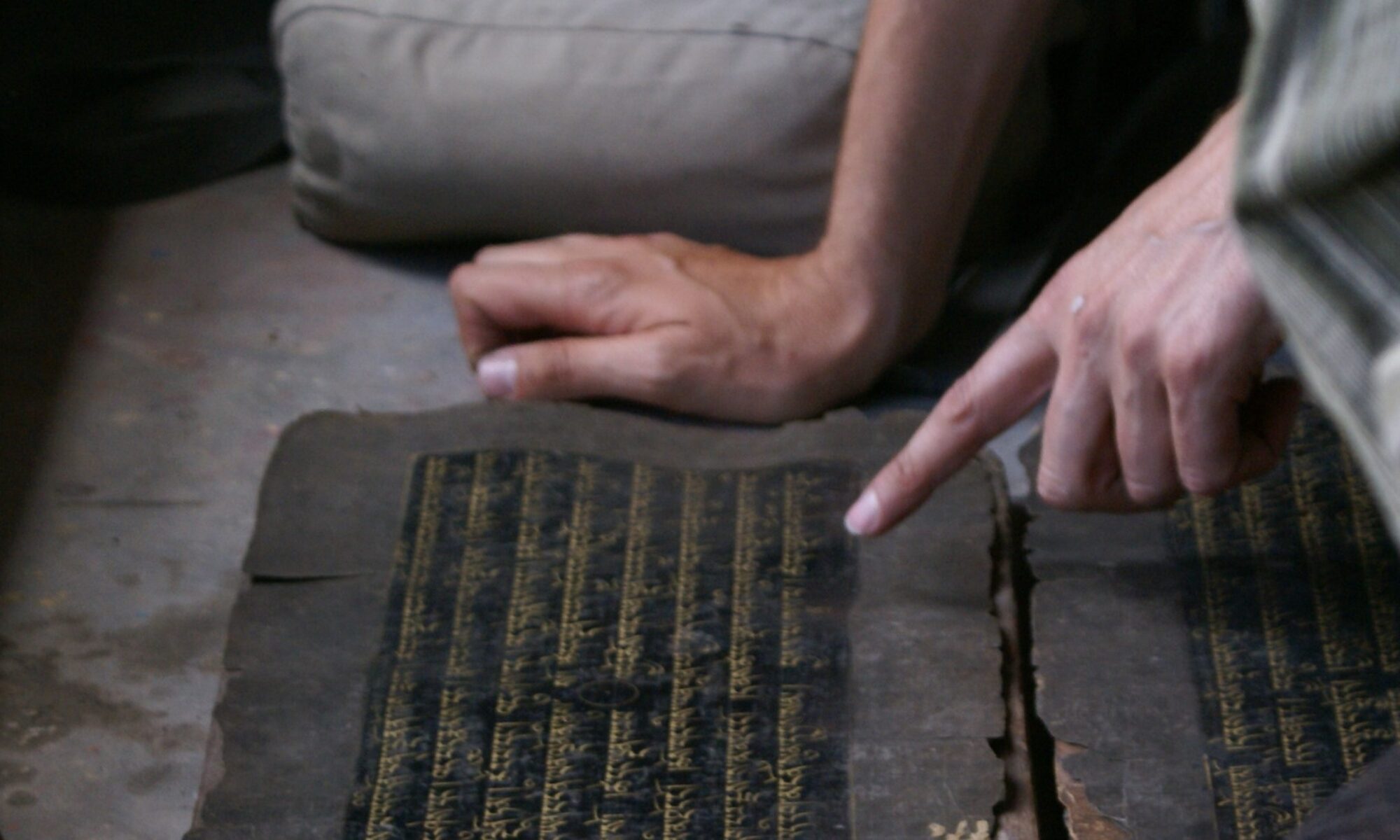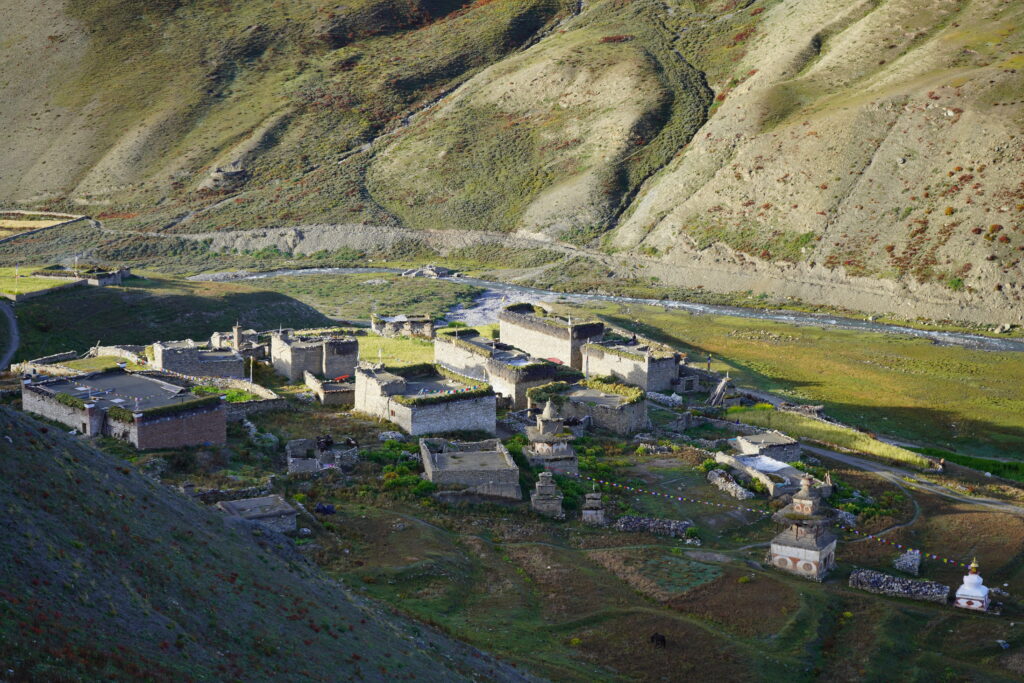
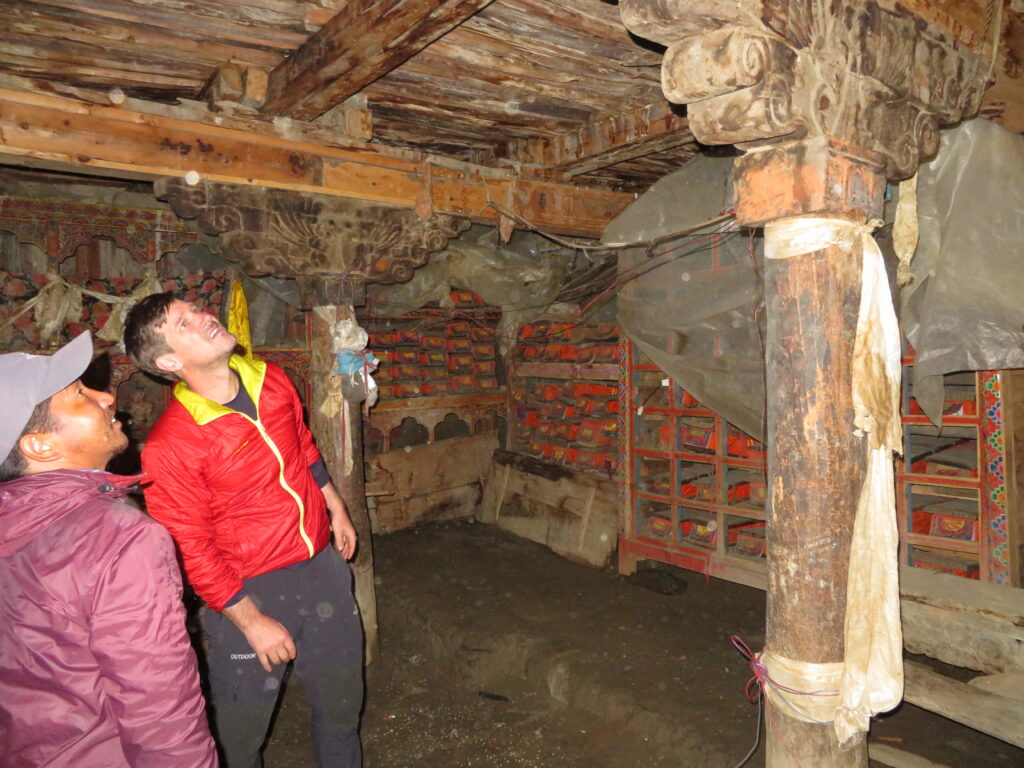
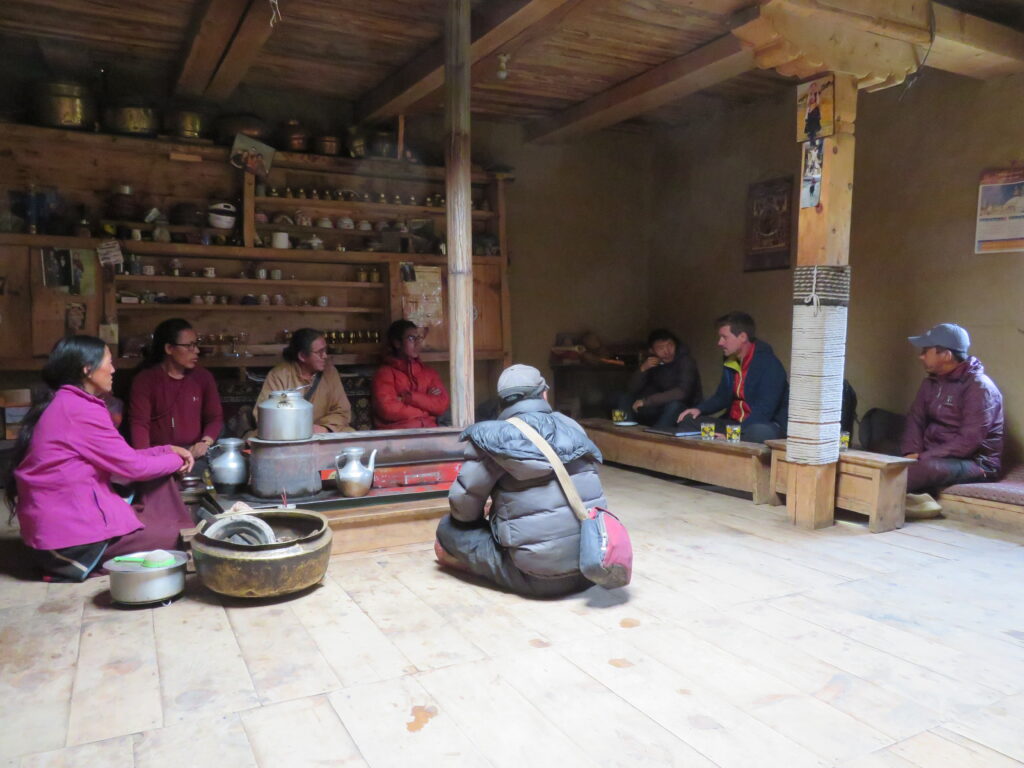
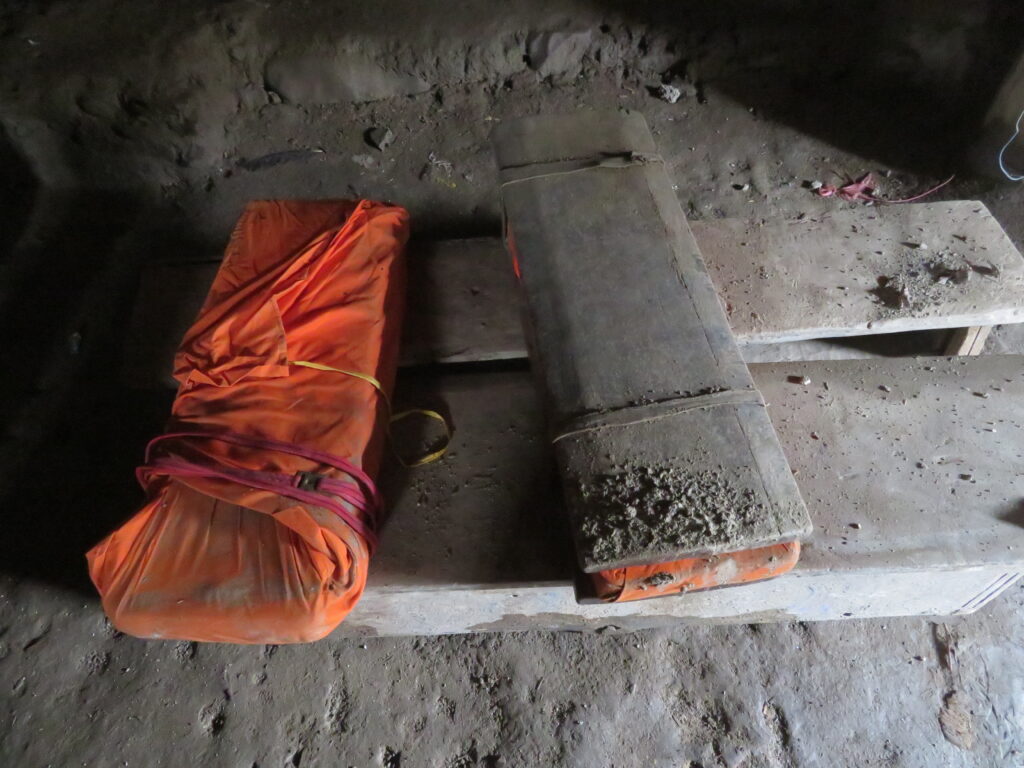
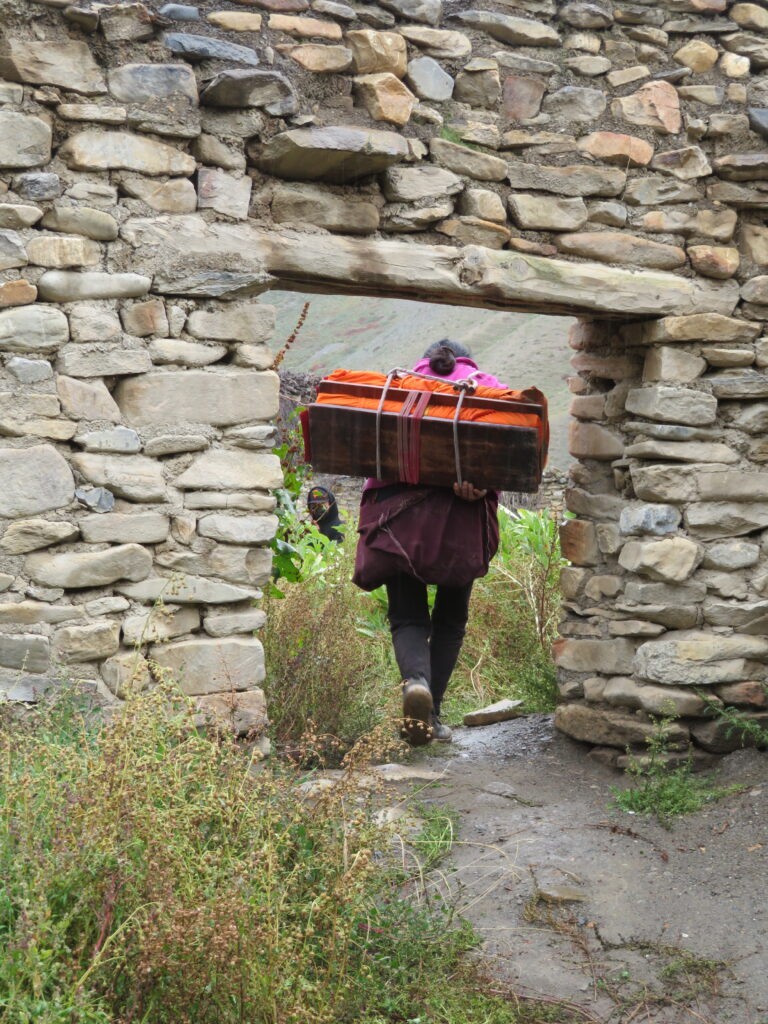
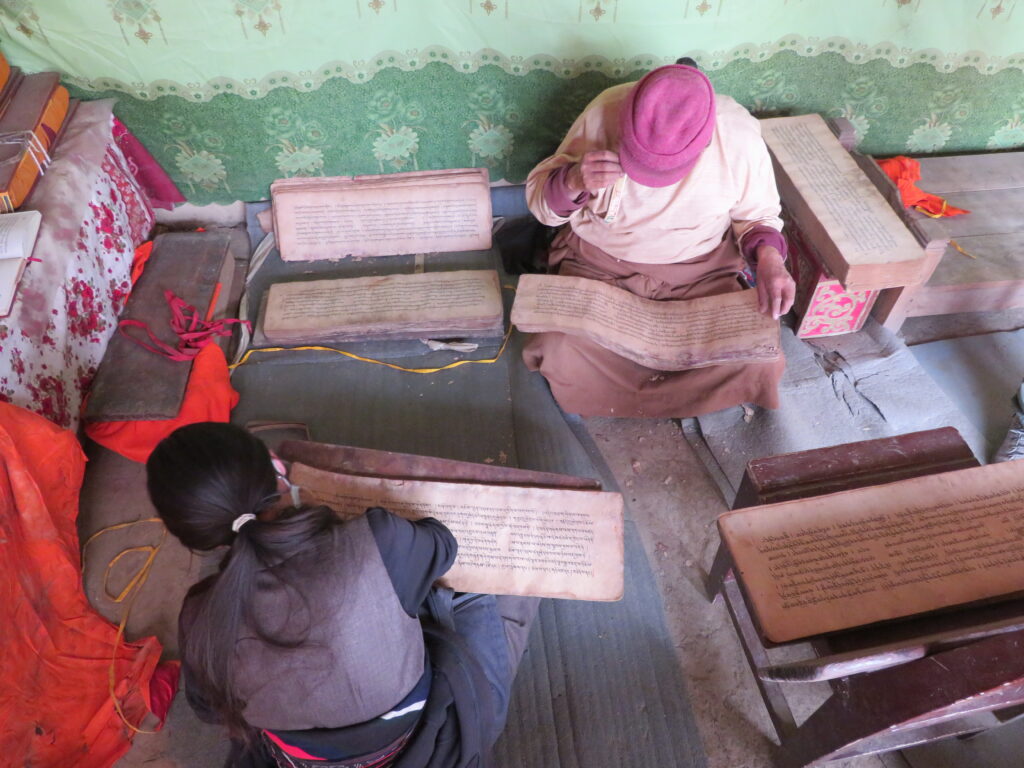
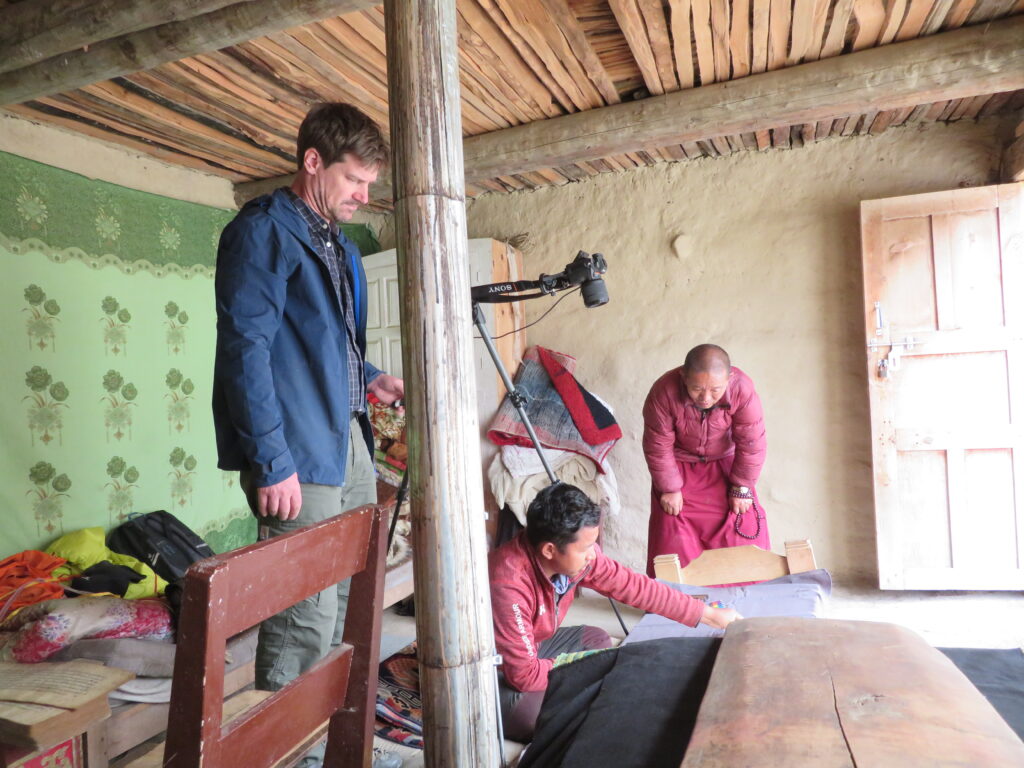
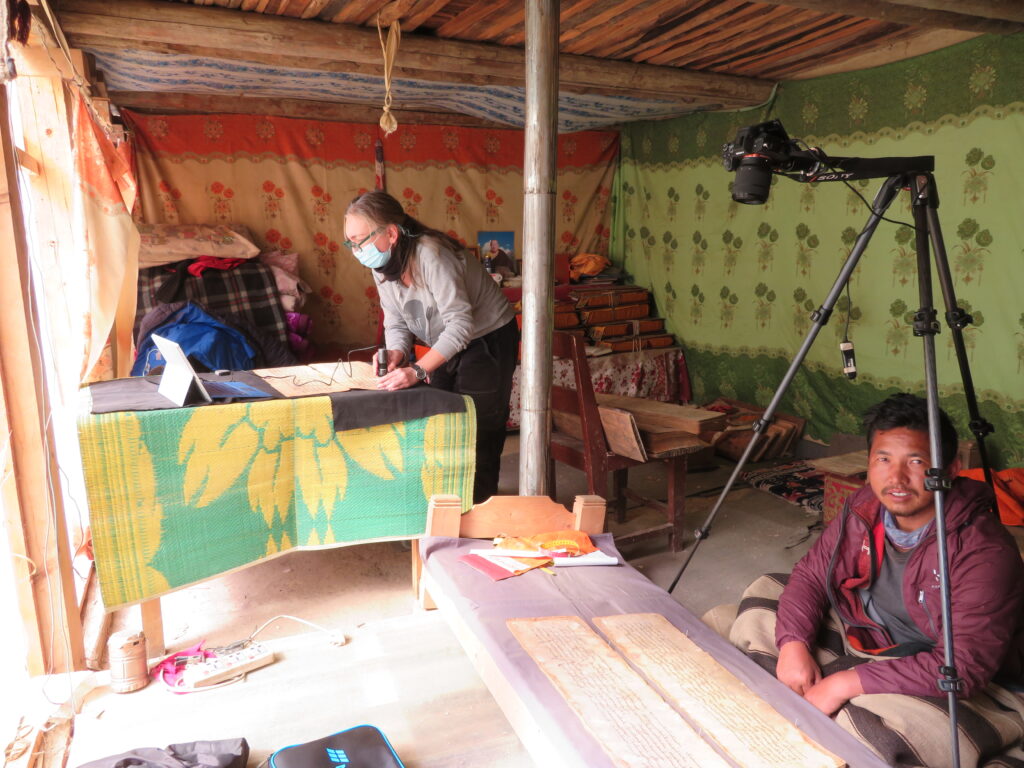
The temple of Drakmar (brag dmar / drag dmar) along with the neighboring temple of Ghagar (gad dkar) is located in a small hamlet in the centre of the Tarap (rta rab) valley that is known as Ghagar-Drakmar, referring to both religious institutions. Despite its high altitude of around 4.100-4.300 meters, the entire area is nowadays considered being part of Lower Dolpo.
Ostensibly, Drakmar Monastery is one of the oldest religious institutions in the region. Originally it had been built as a two-storey structure, which deteriorated over time. During a substantial restructuring of the temple in 2008/2009, the second storey of the building and a sacred chamber at the back of the original assembly hall that had contained high quality wall paintings were dismantled. The 2015 earthquake led to further damage, leaving the existing structures in a very desolate condition, with water leakage affecting the building as well as its interiors.
During a first visit in 2019, the temple and its manuscripts holdings were inspected and negotiations about their future documentation began. Drakmar Monastery houses 109 volumes of Tibetan canonical manuscripts, among them a Sūtra collection in thirty volumes, two sets of the Śatasāhasrikāprajñāpāramitāsūtra (‘bum), a fragment of a Tantra section, and other larger texts of the Tibetan canon. Given the overall condition, most of the manuscripts were wet and some already damaged. It was clear that immediate action was necessary in order to preserve them.
In the framework of a new project, TMPV visited the temple again in September 2022. After resuming earlier negations, all local stakeholders agreed and confirmed the earlier permission to document the manuscripts. In a first step, all manuscripts were shifted to a dry location in order to prevent them from further deterioration. Then, the documentation and digitization of the volumes could begin and the first thirty-two volumes were completed. This included also a detailed documentation of the material features of the manuscripts by Agnieszka Helman-Ważny (University of Hamburg), an expert on paper making and the production of Tibetan manuscripts. The remaining volumes of the manuscripts are scheduled to be digitized in May 2023.
